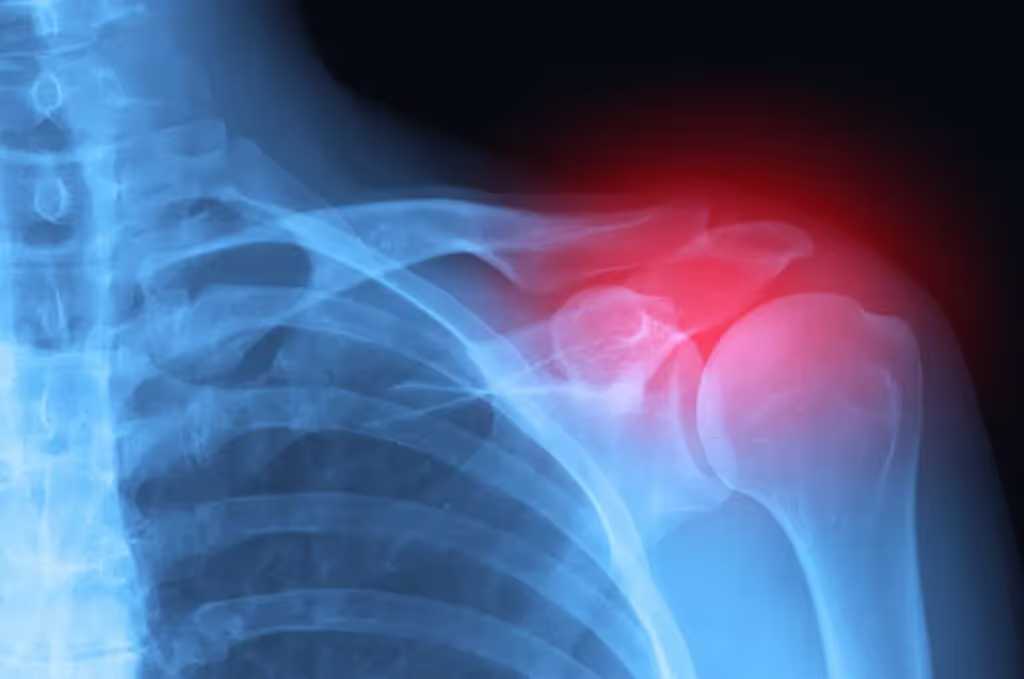Get Help With Your Negligence Lawsuit
If you’ve been harmed due to someone else’s actions, you may be able to recover compensation for your losses with the help of a top personal injury lawyer. The negligence lawsuit attorneys at Parker Waichman LLP have decades of experience with these types of cases, and we can help you understand and exercise your legal rights.
Basics of Personal Injury Law
A personal injury case is a legal dispute in which one person alleges that they were injured due to some type of accident and that another individual is legally responsible for the harm done. Typically, a personal injury case is litigated in civil court, but these disputes may also be resolved prior to filing a negligence or neglect lawsuit.
A personal injury lawsuit generally begins when a private person, known in the lawsuit as the plaintiff, brings a civil complaint against another individual, business, corporation, government agency or other entity, the defendant, over allegations of careless or irresponsible actions that led to an accident or injury that led to harm.
In some cases, the dispute is resolved through negotiations among the parties and the negligence lawsuit attorneys involved. Negotiations are typically followed by a written agreement in which both sides agree to forego future action and resolve the matter through payment of an agreed-upon settlement.
Statutes do not rule personal injury cases; personal injury and negligence law have been formed over time, both here and in England, through court decisions and documents written by judges and legal scholars. Although some states have attempted to sum up the tenets of personal injury law in written statutes, the precedents set by court decisions are the main source of law in cases arising from accidents or injuries.
How Do You Define Negligence in Torts?
Under tort law, negligence is generally defined as a person or entity’s failure to take reasonable action to prevent others from being harmed.
What Is a Negligence Lawsuit?
A negligence lawsuit is a lawsuit filed when a plaintiff is harmed due to the defendant’s disregard for others’ safety. In these types of lawsuits, a negligence lawsuit lawyer must prove that the plaintiff was harmed because the defendant acted differently than a reasonable person would have.
Types of negligence litigation include medical malpractice, nursing home abuse, automobile and truck accident cases, wrongful death, traumatic brain injuries, and fire and burn injuries, including gas explosions and fires in high buildings. Other situations may also be the subject of a general negligence lawsuit. Negligence law covers every sort of contact between people.
In cases involving negligence, the plaintiff must prove that a reasonably prudent person would not have acted in the same way under the same circumstances. If the evidence shows that the defendant was reckless or careless and this caused the injury in question, the plaintiff should be able to secure financial compensation.
What Are the Elements of a Negligence Claim?
In order to prove a negligence case, the plaintiff generally must prove four essential elements of negligence:
- The defendant had a duty of care.
- The defendant breached that duty.
- That breach of duty was a proximate cause of harm.
- There were damages done to the plaintiff.
The legal elements of negligence may change depending on the jurisdiction.
What Is a Duty of Care?
In a case of negligence, the duty of care is someone’s obligation to act in a certain way in order to prevent harm to others. For example, a nursing home nurse, doctor or aide has a duty to nursing home residents to provide a safe, medically appropriate, healthy, and respectful environment.
Breach of Duty of Care: What Is a Breach in Negligence Cases?
A breach is a violation of a law or obligation. In a negligence case, the defendant must have breached their duty of care in some way. For example, if a nursing home resident is supposed to receive specific medications, a certain number of meals daily, and supervision to ensure their safety and the resident is found injured, malnourished, ill or deceased, the nursing home and its representatives may be found to have breached their duty to the resident.
The Breach of Duty of Care Caused Harm
Causation is when the defendant’s act or inaction is shown to have been a proximate cause of the plaintiff’s injuries. However, it need not be the only cause of those injuries. Should negligence on the part of a nurse at a care facility combine with other causes, leading to injuries, abuse or death, these effects may amount to sufficient proof of causation.
The Harm Caused Damage to the Plaintiff
The plaintiff must have experienced measurable damage, such as a broken limb, concussion or illness. Damages may include medical expenses, lost earnings, and pain and suffering.
Negligence Cases and Claims We Handle
The negligence lawsuit attorneys at Parker Waichman LLP have a long history of successfully litigating general negligence cases and recovering fair compensation for our clients. If you or someone you know has been injured due to someone else’s carelessness or recklessness, our negligence lawyers can give you a free consultation to answer your questions about filing a general negligence lawsuit. We have experience with many types of negligence cases, including:
Car and Truck Accidents
Failure on the part of drivers to follow safety precautions and observe traffic laws is an act of negligence, as is neglecting to pay attention to the road. Texting or talking while behind the wheel or even fiddling with the car radio runs the risk of causing an accident or injury to another driver or pedestrian. If you’ve been the victim of any of these inexcusable acts of negligence, you may have grounds for a personal injury negligence lawsuit. Drivers are expected to follow not only traffic laws, but unwritten best practices when sharing the road with others. Negligent drivers should be held accountable for their dangerous driving and filing a negligence lawsuit against a driver may be an appropriate means of seeking justice and compensation for any damages caused.
Medical Malpractice
Medical malpractice lawsuits may be brought against a physician or hospital for administering improper doses of medication, negligent care or lapses in sanitation or equipment maintenance that lead to injuries or infection. In a case of medical malpractice, the individual must have been under the care of a physician and show that in advising, diagnosing, and/or treating the patient, the physician failed to act as a doctor in that specialty should act. Because of this, the patient was injured or became ill or a condition or injury worsened.
A patient may have a malpractice case if a physician deviates from the accepted standards of practice for their field of medicine. In some instances, a case may be brought against a government agency that operates a hospital or provides medical care.
Nursing Home Abuse
Nursing home abuse is one of the most devastating of humiliations for older, vulnerable loved ones. Unfortunately, nursing home abuse routinely makes headlines. However, that has done nothing to stop the appalling practice. Sadly, family and loved ones who are looking for ethical and appropriate care for their senior relatives are often left with limited options, and their loved ones often suffer serious abuse and neglect that leads to physical pain, emotional pain, humiliation, or even death.
The mistreatment, abuse, and neglect of the elderly involves intentional actions that lead to serious risk of harm to a senior by a caregiver or a person in a position of trust. The World Health Organization (WHO) describes senior abuse as “a violation of human rights and a significant cause of illness, injury, loss of productivity, isolation, and despair.”
Nursing homes should provide safe, compassionate, ethical, dignified, clean, and healthy treatment and living spaces, but sadly, abuse does occur. When our elderly loved ones are injured in any way, those responsible must be held accountable for their actions. If you are concerned that a loved one has been or is being victimized at a nursing facility, negligence law may allow you to seek justice and hold the nursing home and its staff accountable.
Wrongful Death
When someone dies because of another individual’s wrongful actions, the person or entity causing the death may be held responsible in a wrongful death action. A wrongful death action may arise from a construction accident, medical malpractice, vehicular accident, police misconduct, or product liability involving defective, dangerous products.
In New York state, only the personal representative of a deceased person appointed by the Surrogate’s Court can bring a wrongful death action. That representative must prove that the defendant acted negligently and that this negligence caused the deceased person’s death. They must also prove that there is a surviving spouse, child/children, and/or other beneficiaries or dependent,s and that these survivors have suffered financial damage due to the death.
Survivors may bring a lawsuit to recover damages for economic losses and the conscious pain and suffering of the person who died. However, survivors may not recover damages for their own pain and suffering in a wrongful death lawsuit.
Traumatic Brain Injuries
The U.S. Centers for Disease Control and Prevention (CDC) considers traumatic brain injury (TBI) to be a significant public health concern. Research from the Journal of the American Medical Association revealed that TBI visits to hospital emergency departments between 2006 and 2010 showed a significant increase in TBI-involved concussions or unspecified head injuries. The greatest increase was seen in adults aged 60 or older and children below the age of 3.
According to the CDC, TBIs are tied to many deaths and life-altering disabilities every year. In 2010, approximately 2.5 million TBIs were diagnosed either as standalone injuries or in conjunction with other injuries. TBIs typically derive from a strike or hit to the head or from an injury that actually penetrates the head. A TBI can have a wide range of severities, from mild to life-altering. The aftereffects of a TBI can include changes in consciousness or mental state, or even extended periods of amnesia or unconsciousness.
TBIs are often accidental and may occur due to the actions of someone else. They can be very significant and expensive injuries and may even lead to death. When a TBI occurs due to another person or entity’s negligence, a personal injury lawsuit may be filed.
Birth Injuries
A number of birth injuries may occur due to medical errors, and when birth trauma takes place because of a medical mistake, it can lead to lifelong consequences for both the mother and the baby. For example, if an obstetrician or midwife does not handle the baby correctly during the birthing process, this may lead to Erb’s palsy, a type of obstetric brachial plexus disorder that usually occurs when the nerves in a baby’s upper arm are damaged, causing what is known as shoulder dystocia, during a difficult birth. Should the obstetrician or midwife fail to diagnose that the mother must give birth by cesarean section, the mother can experience a serious bleed and/or a stroke during the birth process and the baby can endure a brain injury because of a lack of oxygen. Patients who have suffered a birth injury caused by a medical error may file a medical malpractice claim against those who are responsible for the injury.
Burn Injuries
A serious burn injury can cause extreme pain at the moment of injury as well as for a significant time after. Burns may require an extended recovery time and may leave permanent and disfiguring scars. When someone suffers a burn injury due to another person’s negligence, the person or entity responsible for the injury is usually held responsible.
Burns are classified into four degrees. First-degree burns are superficial and will have simple redness and blisters. First-degree burns may be treated at home. A second-degree burn penetrates deeper into the skin and may cause fluid-filled blisters, ongoing pain, and permanent scarring. Third-degree burns penetrate through the skin tissues. This can cause scarring, which makes the skin look waxy or papery, and lead to permanent nerve damage that may cause numbness. Fourth-degree burns go through the skin and damage the tissue below. Skin may be charred or even gone, leading to severe pain. In severe cases of nerve damage, there may be no pain. Third- and fourth-degree burns may require skin grafts and other surgical options, physical restriction, physical therapy, and other treatments.
Burn injuries can be caused by many types of negligence, including car accidents, construction site accidents, defective products or medical malpractice. When a burn injury is caused by another person’s negligence, the injured party may be able to receive compensation.
Slip and Fall Accidents
Slip and fall accidents can happen anywhere without warning and can be incredibly painful. That pain can be made worse knowing that the slip and fall accident could have been avoided had a responsible party met the duty of care to prevent the conditions that led to the accident and subsequent damages. No matter where a slip and fall accident occurs, inquiry should be made into whether or not the event was the result of negligence. An investigation carried out as part of a negligence suit may find that a property owner or third party failed to act appropriately and that action or inaction caused harm to the plaintiff. Working with an experienced negligence attorney to pursue compensation for damages incurred is the best way to handle slip and fall lawsuits.
Negligence Lawsuit Statute of Limitations
Plaintiffs have a limited time in which to file a lawsuit, which is dictated by the statute of limitations. Typically, the statute of limitations begins to run when the plaintiff becomes injured or discovers their injury. The negligence lawsuit statute of limitations is established by state law, and it will also vary depending on the specific circumstances of your case. In New York, the general statute of limitations for negligence cases is three years, but there are exceptions to this rule.
Frequently Asked Questions About Negligence Lawsuits
What Is Damage in Negligence Cases?
In cases of negligence, damages are amounts of compensation awarded to help repair the damage done by the defendant’s actions. Damages may be quantifiable, like medical expenses or lost wages, or non-economic, like pain and suffering.
How Do I Sue for Gross Negligence?
Suing for gross negligence follows the same procedure as a regular negligence case, but while proving an ordinary negligence case entails showing that the defendant’s careless actions weren’t up to the standards of a reasonable person, proving gross negligence requires you to show that their actions were reckless or even deliberately harmful. In a gross negligence case, you may be able to seek punitive damages, which are meant specifically to punish the defendant for their actions.
Why Is Proof of Causation So Important in a Negligence Action?
In a negligence case you are trying to prove that another individual’s actions, or lack thereof, is what caused you harm. In order for the defendant to be held liable for damages, you must be able to show that their behavior is what caused the injury to occur.
Is it Hard to Prove Negligence in Litigation?
The difficulty of proving negligence will vary from case to case. There are many factors that you must prove when you sue for negligence and each lawsuit will be different from the next. For those reasons, some cases will be more difficult than others, and each has to be evaluated on its own merits.
Is Negligence Per Se a Cause of Action?
The concept of negligence per se is when an act is automatically deemed negligent because it violates the law, and this can be a valid negligence cause of action in some states. Proving a case of negligence per se is easier on the plaintiff, as you don’t have to prove that the defendant’s actions were careless; they’re presumed to have been negligent because they broke the law.
Is a Mistake Considered Negligence?
A mistake means you have done something you were not supposed to do; it is not always considered negligence, but it can be. In order for it to be considered negligence, it must be shown that the person who made the mistake did so by acting in a way that was considered below a normal safety standard.
When Can You Be Held Liable for Negligence?
A person can be held liable for damages caused by their negligent actions whenever someone can prove that those actions did not meet the standards of a reasonable person and that they were harmed as a result.
What Is the Function of Duty of Care in Negligence Cases?
The duty of care sets the standard for reasonable behavior against which the defendant’s actions will be judged.
How Do You Establish a Duty of Care in Negligence Cases?
Typically, the duty of care will be based on what a reasonable person would be expected to do in a similar situation. For example, if a business has an icy walkway, a reasonable business owner would put down an ice-melting product to make sure that customers are safe. Sometimes, a law or statute will set the minimum standard of care, such as in the case of clearing snow from the sidewalk, where many municipalities require the snow to be cleared within a certain amount of time after the snow fall ends. In other cases, expert witnesses may be required to help establish the duty of care. For instance, an expert in a branch of medicine can explain the acceptable standard of treatment in a malpractice case.
What Is the Difference Between a Tort and Negligence?
Negligence is a type of tort. However, negligence is not an intentional tort, so it’s usually considered to be caused by carelessness. Intentional torts, on the other hand, are purposeful acts that cause harm.
What Is the Main Aim of the Tort of Negligence?
The purpose of tort laws governing negligence claims is to lessen the burden caused by the negligent act and deter others from similar acts.
What Is a Tort of Negligence Example?
Common examples of the tort of negligence include medical malpractice cases, product defects, and vehicle accidents.
What Is the Difference Between Negligence and Malpractice?
Malpractice is a specific type of negligence that involves a licensed professional who is held to a higher standard of care.
How Is Strict Liability Different From Negligence?
In cases involving strict liability, the defendant can be held liable even if they are not directly to blame for the injury. The plaintiff must only prove that the incident in question happened and that it caused them harm. Defective product claims are often brought under the theory of strict liability, as are cases involving dog bites.
What Is the Difference Between Civil and Criminal Negligence?
While civil negligence claims involve a failure to take reasonable care, the definition of criminal negligence goes beyond this, applying to actions taken with indifference to the risk of harm to others.
How Do You Present a General Negligence Cause of Action?
An explanation of facts that led to an injury and satisfy the elements of the laws of negligence is called a cause of action for general negligence. It is often written as a syllogism, meaning it begins with a premise that details the law that was violated, then proceeds to lay out the facts and circumstances of the claim and draws a conclusion showing how the law was violated.
What Are the 4 D’s of Medical Negligence?
In a medical negligence case, the 4 D’s are duty, deviation, direct cause, and damages. You must show that there was a duty of care, that the health provider deviated from that duty, that the deviation led to damages, and what exactly those damages are.
How Do I Sue a Lawyer for Negligence?
Much like other negligence lawsuits, in order to sue a lawyer for negligence, you must be able to show that the lawyer did not meet the accepted standard of care with regards to your case. This can include filing the wrong papers, missing deadlines, failing to comply with court orders or any other errors that may have been made due to a lawyer’s carelessness.
Can You Sue a State for Negligence?
Different states follow different rules as to whether or not they can be sued. Some states say they cannot be sued for negligence without their consent and state employees are not liable for damages or injuries caused by their employment. Other states permit negligence cases, but you have to jump through a lot of hoops within a short time frame for your case to be considered.
What Kind of Lawyer Do I Need to Sue a Doctor?
A medical malpractice lawyer is needed to sue a doctor. Working with negligence lawsuit attorneys who have experience handling complicated medical cases is crucial, since medical negligence claim requirements can be tricky to navigate.
How Difficult Is it to Prove Medical Negligence?
Proving negligence in health care can be quite difficult. A lawyer has to prove that the health professional acted negligently and unreasonably and it’s because of that negligence, not the underlying health condition, that the patient ended up injured. Usually, this is done by bringing in experts to testify as to whether or not the issue is a case of negligence.
How Much Are Typical Negligence Settlement Amounts?
Settlements for negligence cases can vary widely depending on the type and severity of the plaintiff’s injuries. The median settlement amount is around $250,000, but the amount your case is worth could be much higher or lower. When you work with a negligence lawsuit lawyer at Parker Waichman LLP, we’ll fight hard to get you the largest amount of compensation possible.
Contact Parker Waichman LLP for Help With Your Potential General Negligence Lawsuit
If you’re looking for “attorneys that handle negligence cases near me,” you’re in the right place: Parker Waichman LLP is a nationwide law firm with a reputation for excellence. Our negligence lawsuit attorneys have a history of successfully litigating negligence cases and recovering compensation for their clients for lost wages, medical expenses, and diminished quality of life.





































